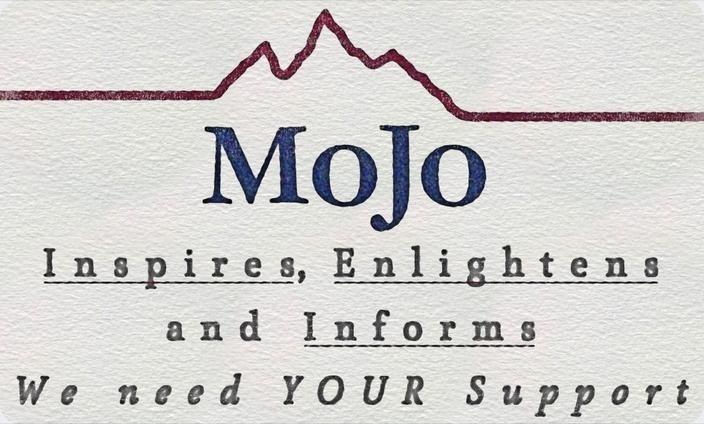Back to StoriesCWD Detected in Ruby Mountains and Flathead Valley
November 11, 2024
CWD Detected in Ruby Mountains and Flathead ValleyMontana FWP urges hunters urged to help track and mitigate spread of deadly chronic wasting disease
by
Sophie Tsairis
Wildlife managers recently detected
chronic wasting disease in an elk in the Ruby Mountains and a deer in the
Flathead Valley, marking firsts for each area. The detection in the Flathead is
significant—it is the first case there—while the infection in the Ruby Valley
is the first elk to test positive in that region.
According to Montana Fish,
Wildlife and Parks, the fatal and highly contagious neurological disease
affecting deer, elk and other cervids was discovered in 1967 in mule deer at a
research facility in Colorado. As of 2023, CWD has been found in captive and
wild cervids in 35 states, five Canadian provinces, Norway, Sweden, Finland,
and South Korea. Yellowstone National Park saw its first case in October 2023
when a mule deer carcass tested positive.
According to a Nov. 1 FWP press release, a hunter harvested the CWD-infected elk adjacent to the
lower Ruby Valley. This was the first detection of CWD in elk in this area,
however there has been a high prevalence of white-tailed and mule deer
infections. The agency continues to sample hunter-harvested animals in the region,
and results indicate that the prevalence of the disease in elk likely remains
low at this time.
Just days before general
hunting season opened on Oct. 26, wildlife officials also confirmed the disease
in a symptomatic buck wandering around the Flathead County Landfill. Dillon
Tabish, FWP’s information and education specialist for the region, told Mountain
Journal this is the first time they’ve detected CWD in wild deer in the
Flathead area known as HD 170.
The main signs of CWD are
sickly, stumbling and drooling animals with drooping head and ears. “It looks
kind of like the name implies, Tabish said. “Like [the infected animal] is
slowly wasting away,” said Tabish. “[CWD] is a slow-moving disease that can
take even a couple of years for a symptomatic deer to show those symptoms.”
Ongoing research suggests predators
may play an important role in keeping CWD under control. Results from a study
published in the Journal of Animal Ecology suggest that “under moderate, yet realistic, predation
pressure from cougars and wolves independently, predators may decrease CWD
outbreak size substantially and delay the accumulation of symptomatic deer and
elk.”
Tabish said hunting is the agency’s
primary tool for monitoring and managing CWD. “Looking at other states that
have been in this for a long time, the best you can do is hope to contain and
control the spread. There’s not any evidence that you can eradicate it once it
infects an area and a herd.”
In the Flathead, FWP is
encouraging increased hunting harvest in the area by increasing the number of 170-00
Deer B tags for individual hunters from one to two. “Hopefully this will help
us get more samples and provide a better picture of how bad it is,” Tabish said.
Reducing the size of the herd in the targeted area will also help reduce the
spread of the disease to other herds, he added.
The agency said
in its press release that it’s unlikely that the detection of CWD in the Ruby
Valley elk will result in changes to elk hunting regulations in the area, which
already has liberal harvest regulations for elk.
Aside from a few exceptions,
like in Libby, Montana, where testing for CWD in harvested cervids is currently
mandated, testing is optional throughout Montana. FWP is urging hunters to test
animals and help provide important data.
Testing for CWD is free, and
hunters can take the samples themselves or bring the harvested animal to an FWP
regional office or a CWD sampling station. Specific instructions can be found
on the agency’s website.
While there is no evidence
that CWD is transmissible to humans, the Centers for Disease Control and
Prevention advises against consuming meat from an infected animal.
__________________________________________________________________________________________________
Mountain Journal is a nonprofit, public-interest journalism organization dedicated to covering the wildlife and wild lands of Greater Yellowstone. We take pride in our work, yet to keep bold, independent journalism free, we need your support. Please donate here. Thank you.
Related Stories
December 4, 2024
FWP Launches Online Dashboard to Track Grizzly Bear Deaths
As delisting
decision looms, Montana increases transparency with mortality monitoring tool.
April 17, 2024
To Feed or Not to Feed
Wyoming decided to keep open its elk feedgrounds. Conservationists are questioning the decision citing concern over deadly chronic wasting disease.
March 26, 2025
River Study Offers New Angle on Yellowstone Recreation
The Upper
Yellowstone Watershed Group report hopes to inform better management for a
cherished regional resource.





